Oh... you are so correct! I did sleep on it. First of all I was completely ready to use the metal front spacer since the other one was gone—or so it would seem. I thought about how to hold it in a vise without undue stress and without it exploding out again. I came upon using Sculpey clay to form around the odd shape and then fire it to make a fixture. But then I realized that it probably would work in its soft form since it just had to stabilize the gun.
I actually made another front bracket and spent a lot of time getting its contours perfect. To do this without the original, I traced the profile at the open end of the gun trough in the left fuselage half. The contour opened up slightly as it went forward, so I had to make a second one with the bottom curve opened up a bit. I was all ready to glue that into the fuselage, and decided to make another front piece as I mentioned. When I got back to the work bench that part had disappeared. I don't know what happened to it. I had been holding it or carrying around and putting it down somewhere. It was just gone.
Now I have writen ad infinitum about the dimensional rift that absorbs parts and then spits them out again. It's a quantum mechanical thing... So I machined another front spacer just to have two (one to practice on), and I had swept the floor twice and laid down to with my eyes at floor level to see anything that was sticking up. Nothing. Then a little time later, I moved the bench forward on its wheel just a bit and there was the plastic front piece just sitting right in the middle of the floor. Seriously. It wasn't there a few minutes before. So I was able to get back to assembling the gun as I originally planned.
The wire idea worked just as I thought would once I had the gun stable enough that I could tip the vise forward so I could visualize the holes. Having different lengths of guide wires helped so I didn't have to get two wires into the holes at the same time. A couple of the wires insisted on going into the wrong holes, but patience paid off and all six went into their correct spots. Here are all 6 wires through the holes with the barrels waiting to follow.

The 1mm barrel fit in the holes was perfect and it didn't take much persuasion to get the barrels to follow the guide wires. In fact, this part went much easier than I thought. Heck, I deserved a break!
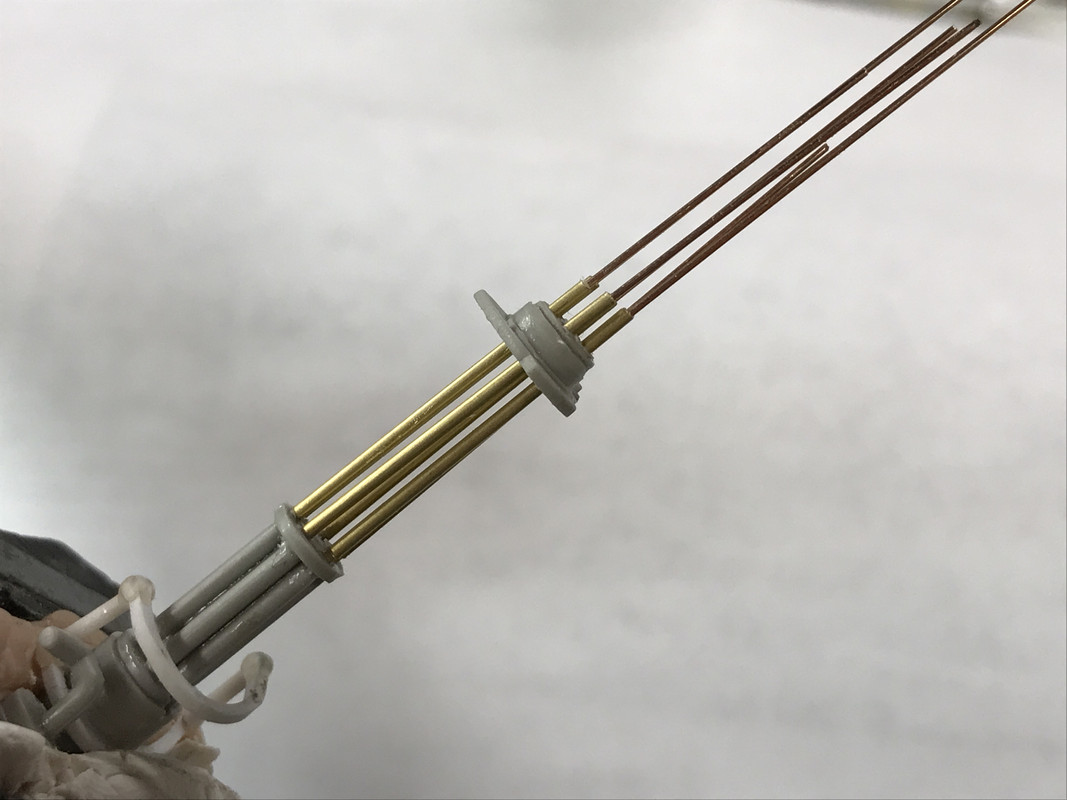
All that was left to do was slide out the guide wires and carefully file the barrel ends so they were all perfectly equal. I debuured the bores and then took this picture.
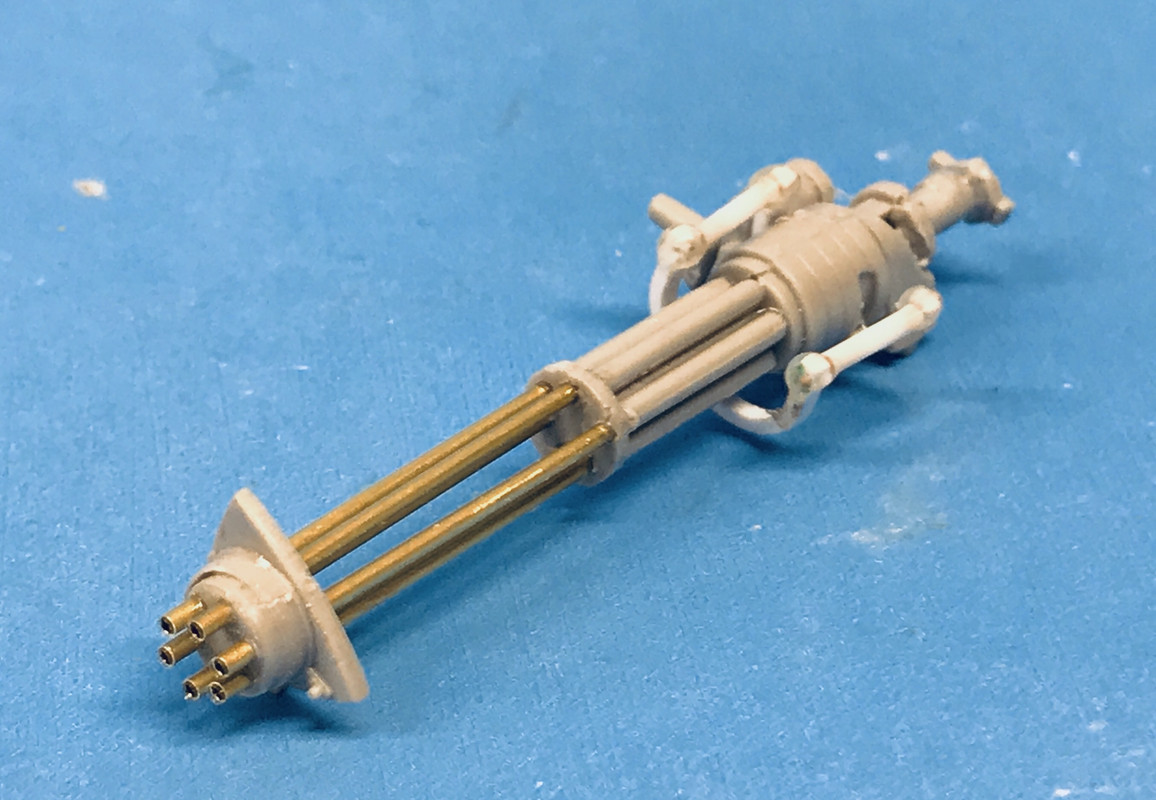
I tried my hybrid into the gun chamber and found the barrel length I chose to be okay, so I then sent it to the paint shop.
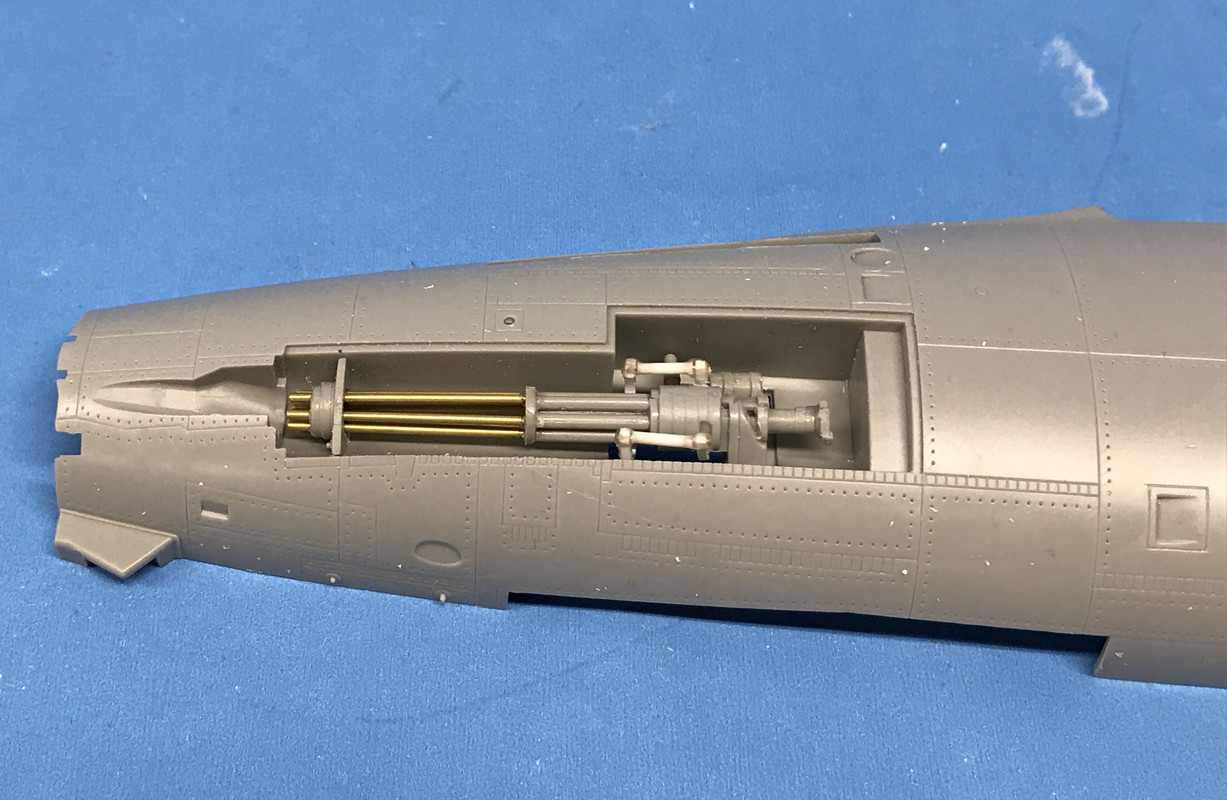
I sprayed the gun with Tamiya Gray primer since I wanted to be sure that the metal parts would hold paint better.
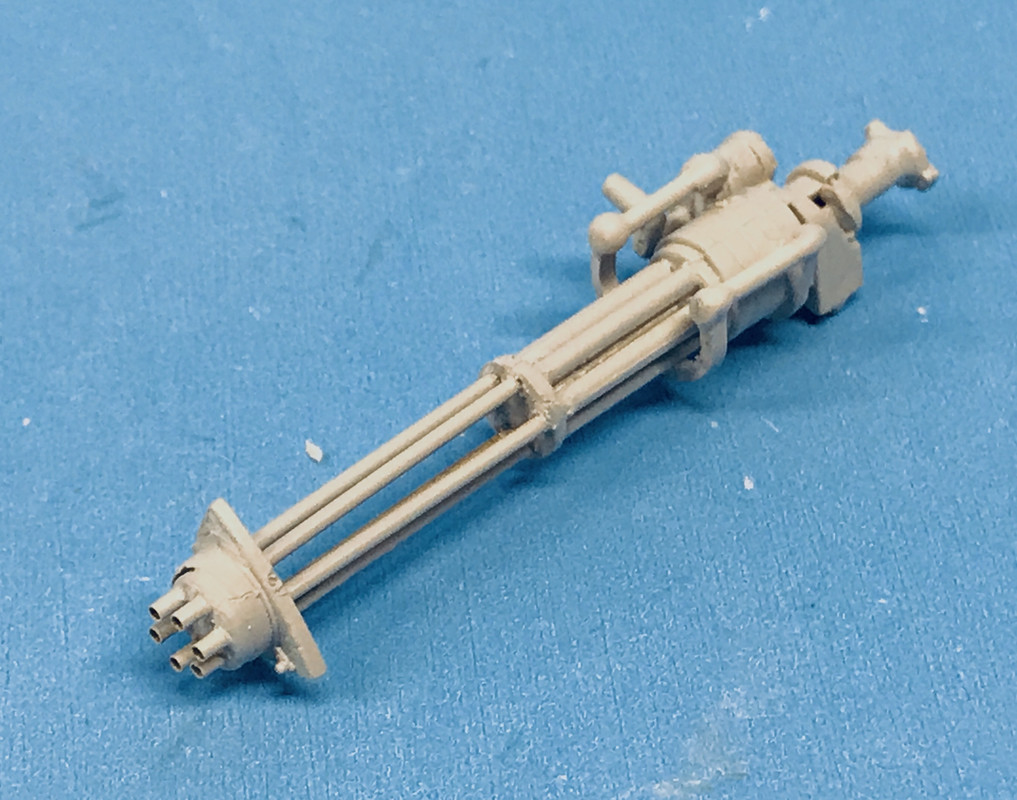
The instructions call for "gun metal", but when you look at these weapons, they're basically black. I'm going to paint it semi-gloss black. But when you look at this picture, the gun is actually pretty gray. I figure something out. The Eduard set includes new wall for the gun compartment. It did not have a new PE door. That was in a different set which I did not get. I notice there's and another spacer on those barrels which was not in the kit and would have made getting the barrels on the front spacer easier.
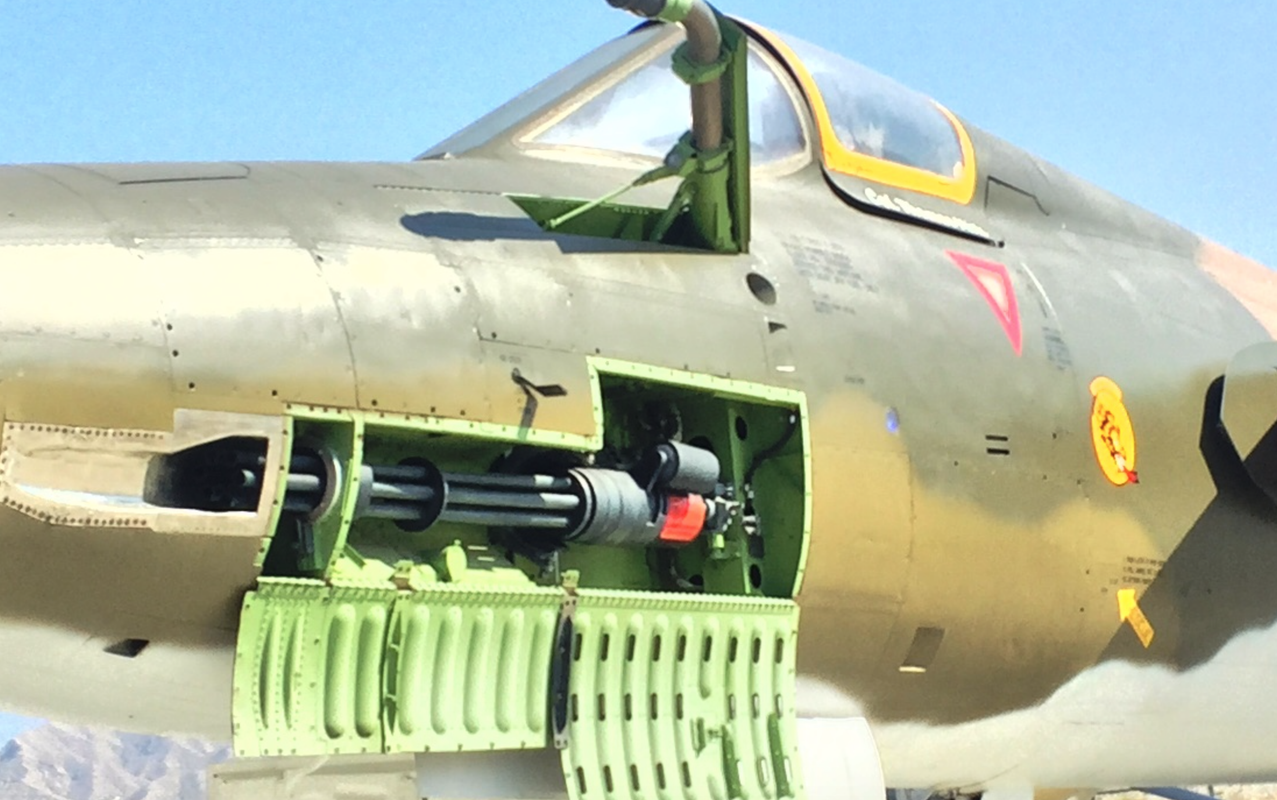
I glued together the cylindrical magazine, cleaned up the joints and then set it asside. It gets painted aluminum and has the 20mm ammo belts attached to it, but it really won't be visible.
I started building the J75 Turbojet Engine. This was a 2nd Generation jet engine and was not a turbofan like many 3rd Gen engines are. I vacilated about stripping off all the molded piping, but then said, "What the heck", I like jet engines and I'm going to make this one with a separate stand so it can be displayed outside of the plane.
Here's a picture of the J75. I need to find an opposite side view since to do an adequate piping job is going to require 360 degrees of detailing. If anyone has a source, please let me know.

All of the 3D boxes and covers are pretty much included in the kit, so the real challenge will all the piping in between.
Before I started removing the piping I took some pictures so I could at least put the ones back that I removed. I have .5mm solder wire that works for the smaller diameter tubing. I have enought various plastic and brass wire shapes to do all the piping.

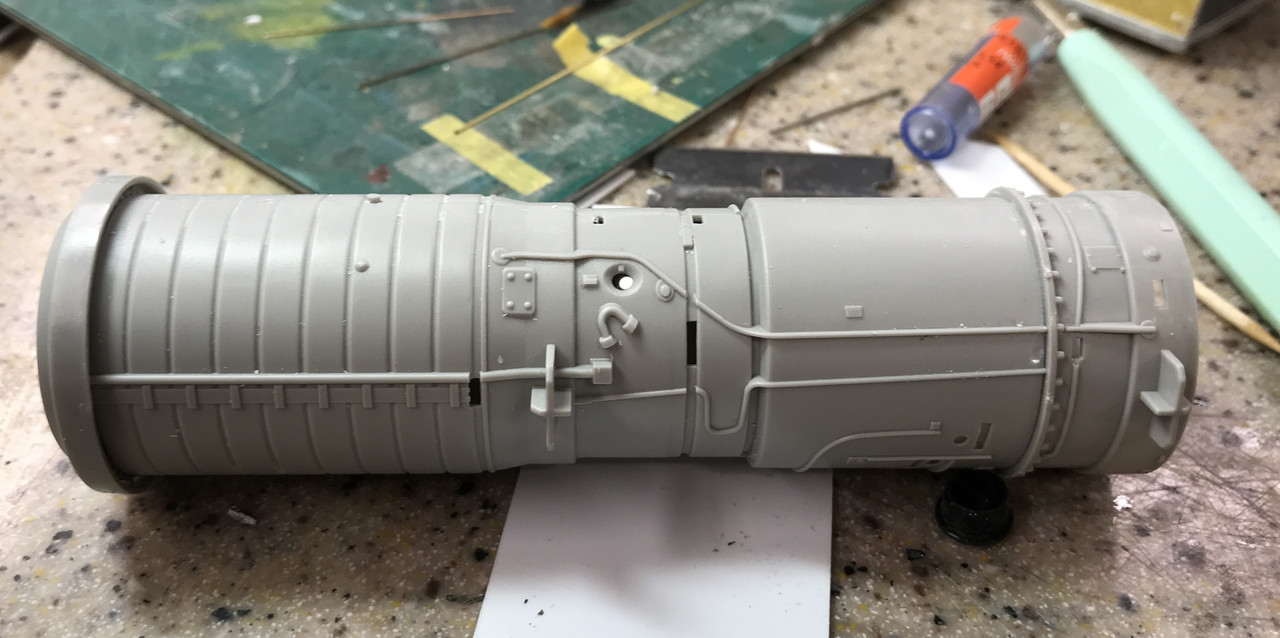
I used the MicroMark chiself to remove the relief piping.
I then started gluing on the valve and control bodies. I almost has a screw up. The front compressor guide vane should have gone on BEFORE the engine halves were glued together, but I was able to pop it apart enough to get the vane in place. I then filled the resulting gap with some thick CA and sanded smooth.
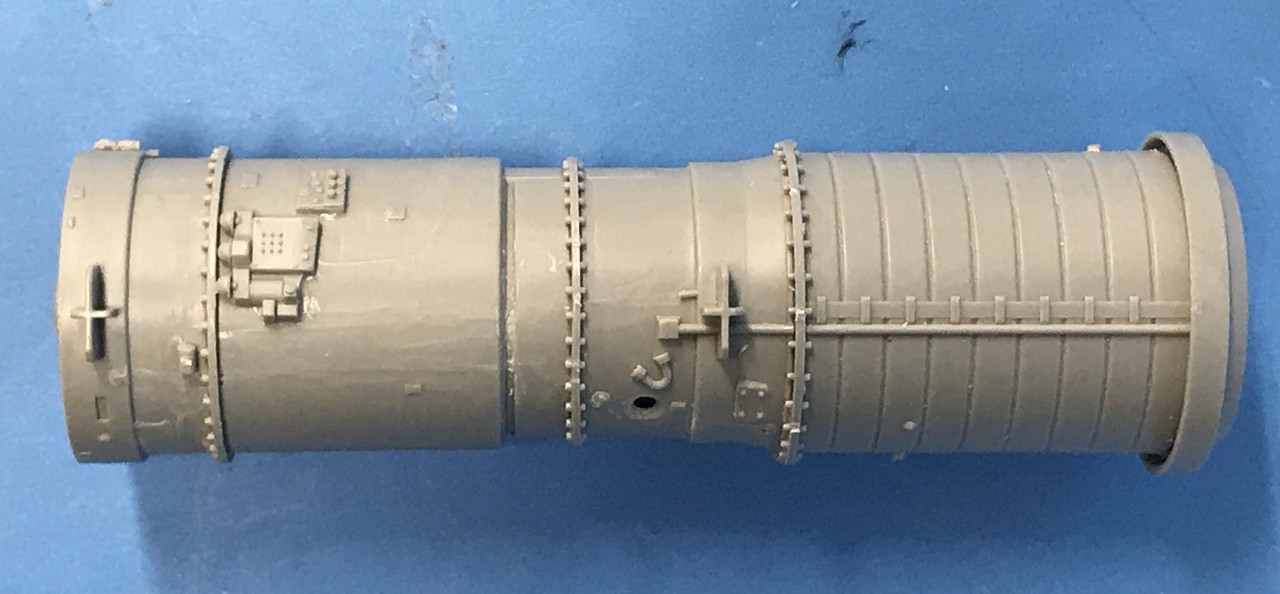

I also started drilling the various remaining nipples and junctions to receive the piping. Since most of the piping is bright stainless steel, it will all have to go on AFTER I paint the bulk of the engine.
I will need to get some plans for making the jet engine cart too.
I was actually looking at getting a set of ABER aftermarket 1:32 brass Vulcan barrels and supports or the resin version from True Details. The True Details gun is specific to the F-104 Starfighter, but I would only need the barrel array and could graft it to the Thud's reveiver. As it is, since I was able to find that criticla front spacer, I won't need to puchase any more parts. I was very relieved to get the gun finished.